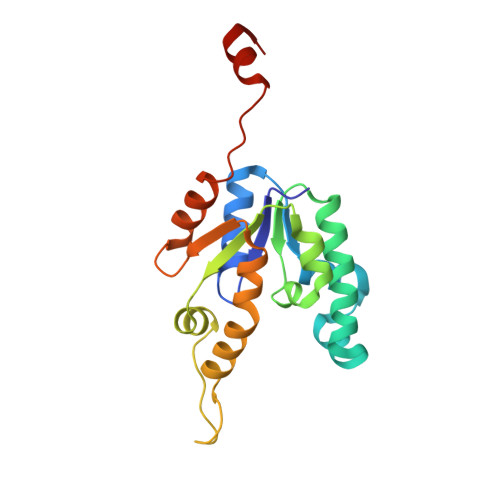Mechanism of Phosphoryl Transfer Catalyzed by Shikimate Kinase from Mycobacterium Tuberculosis.
Hartmann, M.D., Bourenkov, G.P., Oberschall, A., Strizhov, N., Bartunik, H.D.(2006) J Mol Biology 364: 411
- PubMed: 17020768
- DOI: https://doi.org/10.1016/j.jmb.2006.09.001
- Primary Citation of Related Structures:
2IYQ, 2IYR, 2IYS, 2IYT, 2IYU, 2IYV, 2IYW, 2IYX, 2IYY, 2IYZ - PubMed Abstract:
The structural mechanism of the catalytic functioning of shikimate kinase from Mycobacterium tuberculosis was investigated on the basis of a series of high-resolution crystal structures corresponding to individual steps in the enzymatic reaction. The catalytic turnover of shikimate and ATP into the products shikimate-3-phosphate and ADP, followed by release of ADP, was studied in the crystalline environment. Based on a comparison of the structural states before initiation of the reaction and immediately after the catalytic step, we derived a structural model of the transition state that suggests that phosphoryl transfer proceeds with inversion by an in-line associative mechanism. The random sequential binding of shikimate and nucleotides is associated with domain movements. We identified a synergic mechanism by which binding of the first substrate may enhance the affinity for the second substrate.
- Max Planck Unit for Structural Molecular Biology, MPG-ASMB c/o DESY, Notkestrasse 85, 22603 Hamburg, Germany.
Organizational Affiliation:


















